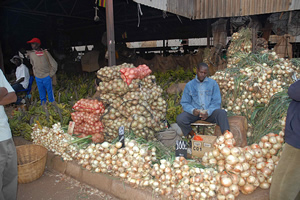Towards a Sadc single visa
Kizito Sikuka Correspondent
Imagine if all tourists to Southern Africa are encouraged to visit more than one country in the region.The Southern African Development Community (SADC) would be one of the most preferred destinations in the world, allowing countries to realise better proceeds from their numerous tourist attractions such as the Victoria Falls between Zambia and Zimbabwe, San rock paintings in Botswana and the absorbing wildlife population in the region.
This cross-border tourism development will create an entirely new assortment of tourism opportunities in Southern Africa and present new opportunities for socio-economic development, as well as deepen integration among member states as countries will jointly market their attractions.
One strategy of achieving cooperation in developing the tourism industry in Southern Africa is to create a single visa system for travellers in the region.
A single visa system will not only allow tourists and travellers to the region to move smoothly across borders and between member states, but will also encourage tourists to visit more than one country in SADC.
Currently, travellers to SADC are expected to apply for a visa each time they intend to visit another country in the region, a situation most travellers say is costly, and a barrier to movement within the region.
In this regard, a single visa system for travellers to the SADC region makes economic sense as it saves time, money, bureaucratic hassles and makes travel easier.
Zambia and Zimbabwe are implementing a similar visa system to encourage tourists to move smoothly between the two countries.
The visa system commonly known as the Kavango-Zambezi (KAZA) Univisa is the first step towards adopting a Univisa in the SADC region.
The KAZA Univisa was initially launched in November 2014. However, due to various challenges the system briefly stopped in December 2015, and later resumed in December 2016.
Updating stakeholders on the implementation of the KAZA Univisa, the Zimbabwe principal director for immigration, Clemence Masango said a SADC Univisa is critical in promoting tourism in the region, adding that it was time for other countries in SADC to join the KAZA Univisa.
“The KAZA Transfrontier Conservation Areas countries must now take full ownership of and responsibility over this KAZA Univisa programme if it is to be a success and a permanent feature in the facilitation of tourism and marketing of our products and destination,” he said.
The implementation of the KAZA Univisa was originally set to be rolled out in four different stages.
The pilot phase involves Zambia and Zimbabwe, with the next step expected to cover three other countries, namely Angola, Botswana and Namibia, who make up the five members of the KAZA Transfrontier Conservation Area (TFCA).
Thereafter, Mozambique, South Africa and Swaziland are scheduled to join the KAZA Univisa system.
The fourth and last stage should see all the other remaining SADC countries – the Democratic Republic of Congo, Lesotho, Madagascar, Malawi, Mauritius, Seychelles and the United Republic of Tanzania – joining the visa system, thereby adopting a Univisa in the SADC region.
Chief executive of the Zimbabwe Tourism Authority Karikoga Kaseke said the establishment of a Univisa in SADC will be the “the final answer to multi-destination access” in the region.
He said such a move will also make the region cheaper to access, boosting arrivals and revenue from tourism.
“People plan holidays in a manner that takes them to two or more countries,” he said, adding that tourists always strive to avoid any unnecessary or complicated processes including expensive visa applications.
“If travellers get a visa in one country that gives them access to other countries that are on that visa, it will be more appreciated . . .
Read the full article on www.herald.co.zw
As such, going forward it would be prudent for us in the region and beyond to seriously consider the promotion of multi-destination access through the establishment of the tourism visa.”
The SADC Univisa system is expected to be modelled along the Schengen visa that allows free movement of travellers across the European Union.
When fully implemented, a single visa for SADC has the capacity to considerably improve the travel and flow of visitors to and within the region.
Southern Africa has some of the best attractions in the world that range from Mount Kilimanjaro in Tanzania to the Great Zimbabwe.
According to a recent Southern African Travel and Tourism Barometer by the Regional Tourism Organisation of Southern Africa (RETOSA), tourist arrivals to Southern Africa continue to increase. For example, arrivals increased from about 23 million in 2013 to more than 24 million in 2014. -sardc.net







Comments